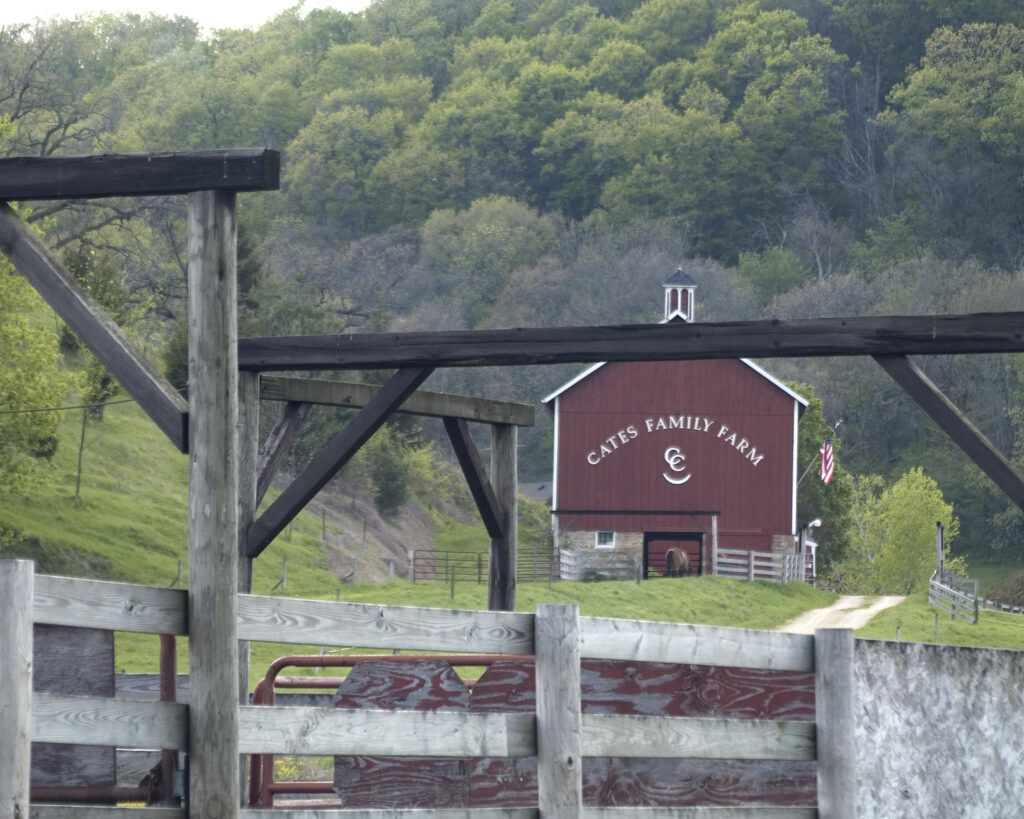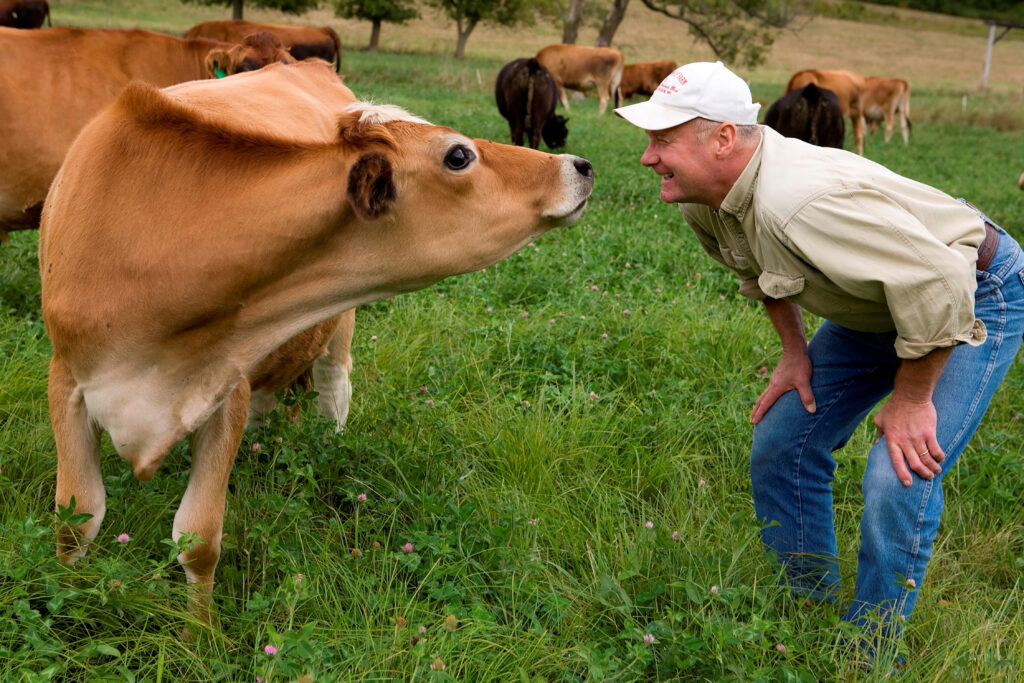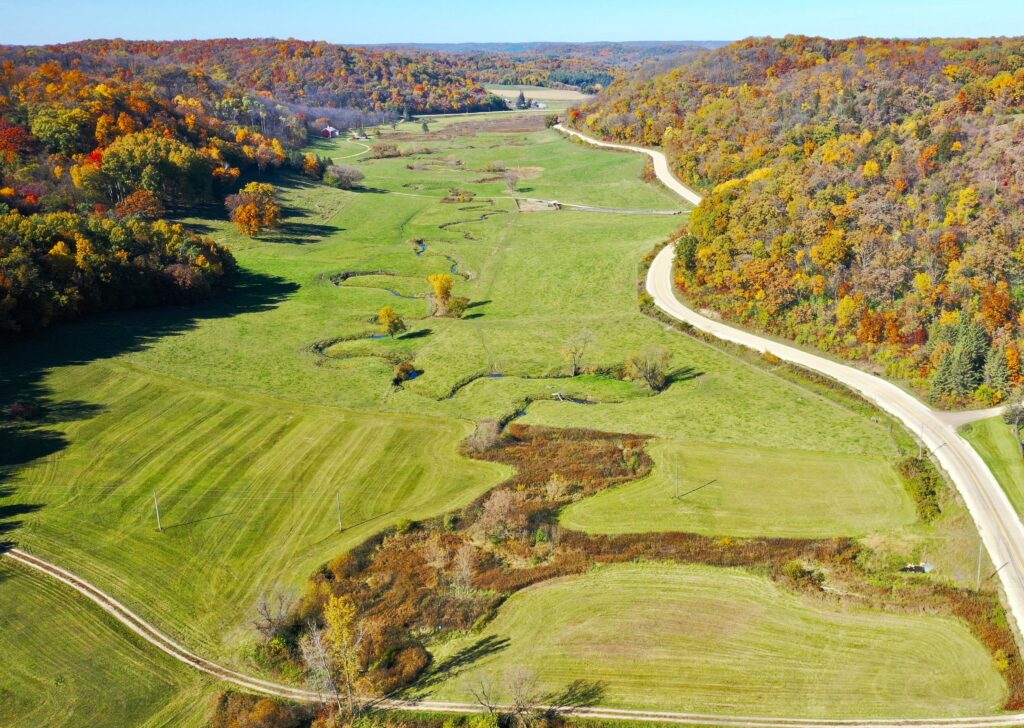
A Creek Runs Through This Driftless Land: A Great Addition to Your Bookshelf!
Are you looking for a new read? Any landowner should have this on their shelf! Check out this article on "A Creek Runs Through This Driftless Land," by Richard L. Cates Jr.
By Denise Thornton
“Today, our farm runs on sunshine and rain, healthy soil, and good relationships. Period. It took us a long time to understand and accept all of this,” says Dick Cates in the introduction to his recently published book.
A Creek Runs Through This Driftless Land: A Farm Family’s Journey Toward a Land Ethic by Richard L. Cates Jr. is a great addition to any landowner’s bookshelf. In it, Cates shares his family’s multi-generational journey, weaving science, love, and a land ethic into a successful model of raising and marketing grass-fed beef while working to restore the land and adjoining trout stream. He writes about the hard work, heartbreak, discoveries, and joy that have paved his family’s path.

Cates holds a PhD degree in soil science and has always been a writer. His works include a children’s book, and Voices from the Heart of the Land, a collection of reminiscences, observations, and opinions of elderly farmers in his neighborhood. “I would get together with my farmer friends and listen to the old guys. They would always say, ‘Someone should write these stories down,’ and I knew I should do it.” He interviewed more than 30 families from 2001 to 2006 for Voices.
A Creek Runs Through This Driftless Land has been in the making for much longer. His father, a lawyer in Madison, who valued the time he spent working on a farm in his youth, bought a struggling farm near Spring Green in 1967 so that his five children could learn the value of physical work. Much of their early labor was enthusiastic, but ill informed. “My father introduced me to A Sand County Almanac when I came home from college for Christmas in1971. I read the whole thing and began a lifetime conversation about land ethic with my father.”
Cates explains his motivation to write his latest book. “I found myself in this unique position of both scientific training, studying the principles of good land management and soil health, plus I’m also a practicing farmer.” He notes in the book, “In the years since my father purchased our farm from the Stapleton family in 1967, our family is the only one in the rugged terrain of the Town of Wyoming, in Iowa County, Wisconsin, that has started and maintained a farm business over the past fifty years.” Cates’ son and his family now make their entire living from that land.”

Cates was honored with the Wisconsin Farm Bureau Distinguished Service to Wisconsin Agriculture Award in 2020 based in part on his many contributions as professor in the College of Agricultural & Life Sciences at UW-Madison. In 1995, Cates helped create the Wisconsin School for Beginning Dairy and Livestock Farmers, which is a program that teaches young farmers what they need to know when starting their farming businesses. “Dick’s commitment to the agriculture community is admirable because he leads by example.” said Joe Bragger, president of the Farm Bureau.
Some of Cates’ many accomplishments include, time spent serving on the Wisconsin Department of Agriculture, Trade and Consumer Protection Board, and the USDA Secretary’s Advisory Council for Beginning Farmers and Ranchers. He’s served on the boards of the Town of Wyoming (as an elected official), the Driftless Area Land Conservancy, and the Sand County Foundation. Additionally, the Cates family has been recognized for their soil and water conservation work through various awards since 1998 and are members of the Iowa County Uplands Farmer-Led Watershed Project, and the Lowery Creek Watershed Initiative.
Cates has not only taught many beginning farmers how to operate their farms to succeed financially, but also to value and restore their soil. In the preface of A Creek Runs Through This Driftless Land, he explains, “In Wisconsin, we have no oil and few precious minerals. But we are the center of the largest fertile region on the planet because we have rich soil, and it rains more often than not when the crops need it.”

Stemming from Cates’ well-honed understanding of Wisconsin’s great agricultural and natural resources, he is concerned that Wisconsin is losing farmland at the rate of one average-sized farm every day. He is also worried that some agricultural practices are letting farm soil erode. However, his own experience shows that farming does not have to follow these paths.
“I came to realize that we have an important story to tell,” says Cates, “how our family runs a profitable farm, and in the course of our lifetime here, Lowery Creek has gone from being brown, muddy, and warm to being one of three sources in the state for heritage brook trout used for breeding in some of the state’s fish hatcheries. I don’t take credit for being the only person who is caring for Lowery Creek. It takes a community. But my family is right in the middle of Lowry Creek, and it is imperative to us that if we want to be part of this community, we need to bring our best game.”
A Creek Runs Through This Driftless Land includes a fascinating deep dive into its history – going back more than 500 million years. Cates says he has a collection of over 40 books that were part of his research into the geology, and the land use practices of the First Peoples, and Europeans in his area, in addition to the many papers and articles that he consulted as he wrote the book. Beginning with the rock strata beneath Wisconsin today being built as the calcified remains of sea life drifted to the bottom of a shallow tropical ocean straddling the Equator. Not so very long ago, nomads hunting mastodons and giant beavers may have paused for a refreshing drink from Lowery Creek.

His vivid image of the historic “prairie breaking” that took place from Ohio, west across the North American plains, made this reader gasp. He describes, “With a heavy wooden beam and long moldboard, the ‘breaking plow’ required as many as ten oxen to pull. Witnesses … likened the sound of the snapping of the millions of grass roots to an endless cacophony of rifle fire.”
Bringing the story up to recent history, Cates often speaks through the perspective of an ancient sentinel burr oak that has been holding its own for 250 years where beef cattle now graze in its shade. He writes, “Under the shade of its foliage, under its protection from the rain, under the falling of its brown leaves, under its snow-covered branches, I, too, find myself rooted here.”
His collection of personal journals that he’s been writing since his children were young has allowed Cates to breathe gripping life and heart into the chronicle of his own family’s challenges and successes. From his father to his granddaughter, they all help to tell a vivid story. Cates says readers will find that his wife Kim’s voice is particularly powerful. “Her perspective made all the difference,” he says.
The volume also is richly studded with photos of the Cates family at work and play, and also includes many breath-taking drone shots that exemplify the beauty of Lowery Creek’s valley.
As conditions have improved on the Cates’ farm and in the Lowery Creek watershed, Cates has set his sights much wider with A Creek Runs Through This Driftless Land. He says, “I feel like, having taught for many years, and as a holder of the Leopold Conservation Award, I had a responsibility to share the things I have observed.”
A Creek Runs Through This Driftless Land is available from Amazon, but can also be purchased from its Wisconsin publisher, Little Creek Press.
